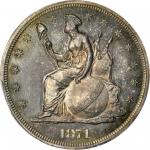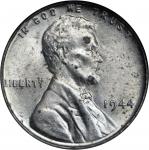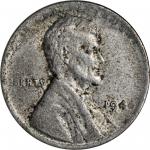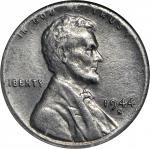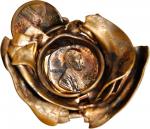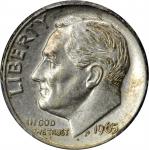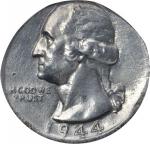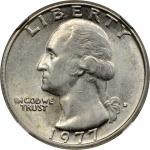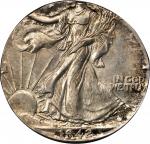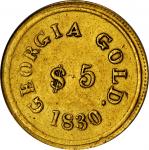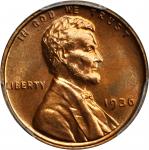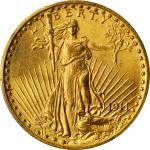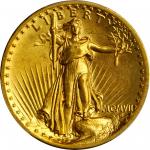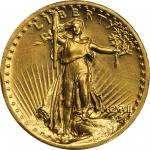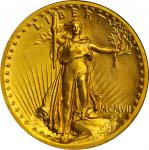1852 Pattern Liberty Seated Dollar. Restrike. Judd-134, Pollock-161. Rarity-7+. Copper. Reeded Edge. Proof-64 BN (PCGS).The obverse and reverse designs are the same that the Mint used to strike regular issue 1852 Liberty Seated silver dollars. Struck from a reverse die identifiable by a series of short, parallel, nearly horizontal die lines in the field below the eagles left wing. This die was also used to produce some silver restrikes of the 1852 dollar, including the Norweb specimen (Bowers and Merena, November 1988, lot 3800).This is a handsome specimen -- fully Choice in quality -- that is also an exceedingly rare coin with tremendous appeal for advanced pattern enthusiasts and specialists in Liberty Seated coinage alike. Both sides are bathed in a blend of orange-copper and medium brown patina. Striking detail is expectably sharp for the method of manufacture with virtually all design elements fully rendered. The in hand appearance is smooth and inviting, close inspection with a loupe revealing faint surface build up that we mention here solely for accuracy. There are few features with which to identify this coin in past and/or future market appearances, but given the extreme rarity of this type we feel compelled to offer a swirl of slightly darker color on the reverse at the letter E in AMERICA for this purpose. Outstanding quality and awesome rarity that are worthy of the strongest bids. A classic key date issue in the challenging Liberty Seated silver dollar series of 1840 to 1873, the regular issue 1852 was produced at a time when the delicate balance between gold and silver on the world market had become upset by the extensive mining of the California Gold Rush. In 1849, one year after James Wilson Marshalls historic discovery at Sutters Mill on the American River, it cost the Mint $1.013 in metal to produce a single silver dollar. This premium was not high enough to discourage relatively generous mintages, which were achieved at the request of bullion depositors anyhow, the coins trading for slightly more than face value in commercial channels. By the early 1850s, however, the price of silver has risen to such a level where the bullion value of coins such as the half dollar and silver dollar far exceeded face value. Most silver coins disappeared from circulation, silver dollars being bought up by exchange and bullion brokers. Under such circumstances there was little incentive for bullion depositors to request new silver dollars for their precious metal, circulation strike mintages at the Philadelphia Mint amounting to just 7,500 coins in 1850, a mere 1,300 coins in 1851, and an even more paltry total of 1,100 pieces in 1852. These deliveries represent significant reductions from the 62,600-piece mintage reported for the circulation strike 1849. Although the Act of February 21, 1853 left the weight of the silver dollar unchanged, the return of smaller denomination silver coins to circulation that the Act facilitated also resulted in an increase in yearly silver dollar coinage. As with their pre-1853 predecessors, those Liberty Seated issues struck in the Philadelphia Mint during later years were made at the request of bullion depositors. Most coins were used in international commerce with England and China, the Liberty Seated silver dollar series as a whole foreshadowing the specialized trade dollar introduced in 1873.The rarity of the low mintage circulation strike 1851 and 1852 silver dollars was recognized early in the growing numismatic community of the 1850s. During the final years of that decade, at the same time that Mint Director James Ross Snowden began marketing yearly Proof coinage to collectors on a wider scale, Mint personnel also produced limited numbers of Proof restrikes of rare key date issues such as the 1851 and 1852 silver dollars. These restrikes are not part of a regular Mint issue, mintage figures were not recorded, and the coins were sold privately to collectors. The first public offering of Proof restrikes of the 1851 and 1852 silver dollars was in Edward Cogans Simon Gratz Collection sale of May 21, 1859. Snowden, who served as mint director from June 1853 to May 1861, probably oversaw the production of silver restrikes of these two issues from 1858 or early 1859 through the end of his tenure. Whereas silver restrikes of the 1851 and 1852 Liberty Seated dollars were known to the numismatic community by 1859, the first appearance of copper strikings of the 1851 was in Edward Cogans F.S. Edwards sale of October 1865. Copper strikings of the 1852 silver dollar appeared even later, the earliest known auction offering part of Edward Cogans April 1877 A.S. Jenks Collection Sale. In addition to the staggered appearance of these coins in numismatic circles, the existence of several different die varieties points to multiple striking periods for Restrike Proof 1851 and 1852 silver dollars. In addition to the final years of Snowdens tenure as mint director, Henry R. Lindermans two terms in that office (April 1867 to May 1869 and April 1873 to December 1878) are periods of time when many restrikes and other numismatic delicacies are known to have been made for private sale to contemporary collectors. Based on the types earliest known appearance in Cogans sale of April 1877, we believe that the copper restrikes of the 1852 silver dollar were produced in the early to mid 1870s during Lindermans second term as mint director. These coins were almost certainly made alongside another batch of silver restrikes since, as related above, all known copper impressions were struck from the same reverse die as at least one of the known silver examples (the Norweb specimen).Copper impressions of the Proof restrike 1852 silver dollar are exceedingly rare -- even more so than the silver strikings -- the website <em>uspatterns.com</em> accounting for approximately half a dozen survivors. We can positively confirm the existence of only four specimens, one of which has been silver plated:<p>1 - <strong>PCGS Proof-65 BN.</strong> Pictured on the <em>PCGS CoinFacts</em> website.<p>2 - <strong>PCGS Proof-64 BN.</strong> The present example, also pictured on the <em>PCGS CoinFacts</em>s website.<p>3 - <strong>NGC Proof-62 BN.</strong> Ex our (American Numismatic Rarities) Classics Sale of September 2003, lot 51. Likely earlier ex New England Rare Coin Auctions FUN Auction of January 1981, lot 1107. The plate coin for the type in both the 10th (2009) edition of the Judd pattern reference and on the website <em>uspatterns.com</em>.<p>4 - <strong>NCS Proof. Silver Plated.</strong> Ex Heritages CSNS Signature Sale of May 2003, lot 7090.<p>In addition, we are aware of two other auction appearances for this type that likely represent earlier offerings of one or two of the coins listed above: A - Ex Edward Cogans sale of the A.S. Jenks Collection, April 1877.B - Ex King Farouk of Egypt; Sothebys sale of the Palace Collections of Egypt, 1954, lot 1746; M.H. Bolender. As the foregoing census makes clear, this is only our second offering for a Proof restrike 1852 silver dollar in copper that we can recall. The present near-Gem, finer than the NGC Proof-62 BN specimen that we (ANR) sold in September 2003, represents a fleeting bidding opportunity for astute pattern and Liberty Seated dollar collectors alike. A highlight of our 2018 ANA Auction that is sure to see spirited bidding.

